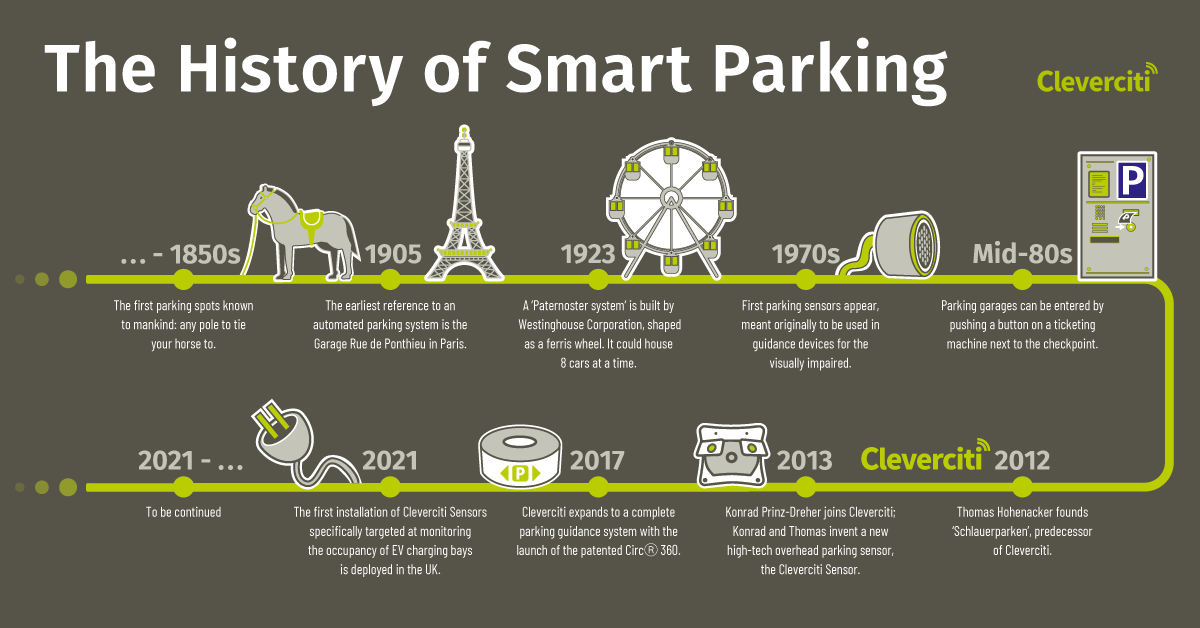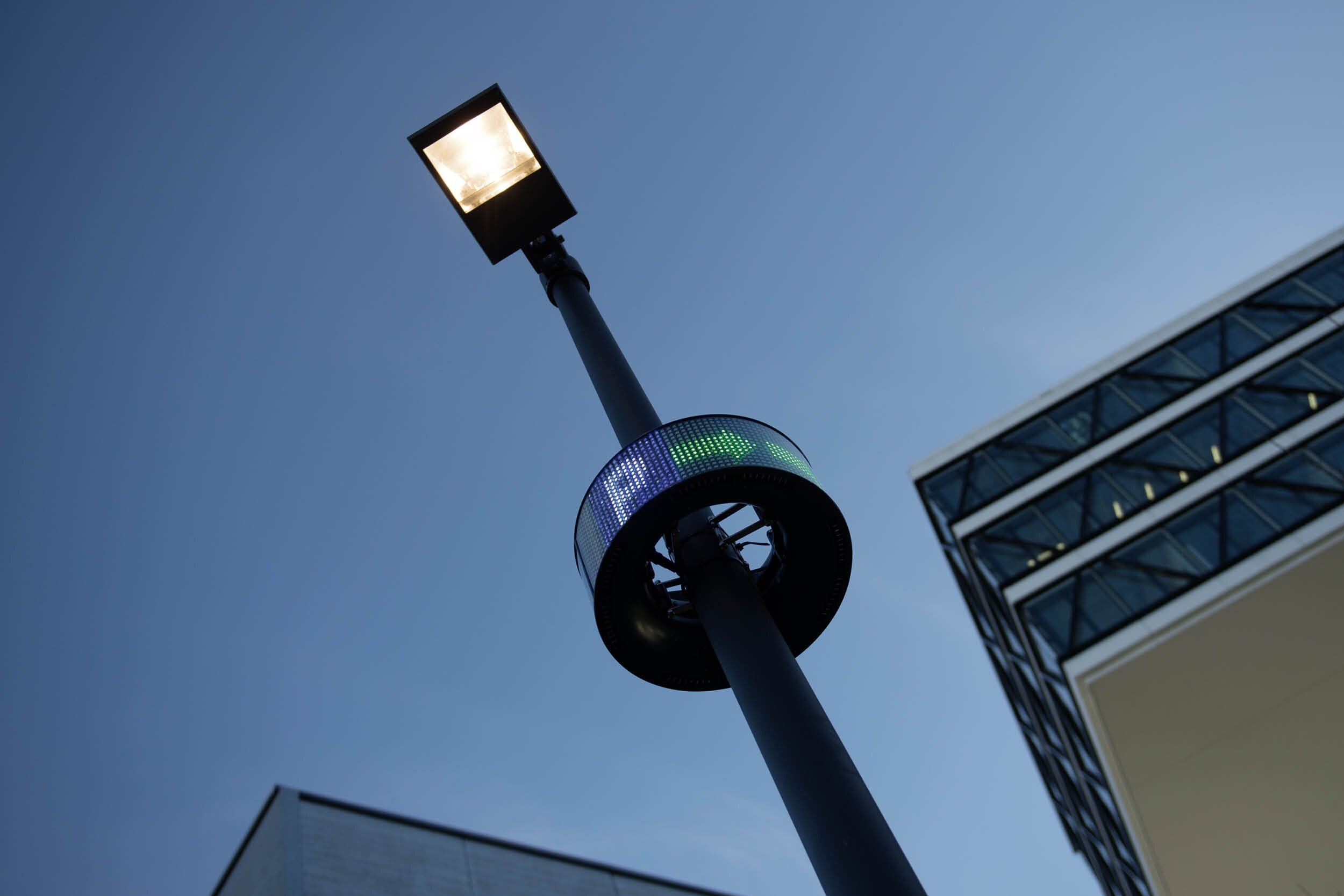We love to say that parking hasn’t changed in 100 years. Until Smart Parking, finding a parking space has always been based on pure luck. Will I find a pole to tie my horse up to? Will I find a parking spot to park my car? But then Smart Parking came along and revolutionized parking completely. It started out with simple ground sensors and moved to sophisticated overhead sensors that eliminated the element of luck. Smart Parking as we know it has evolved into ingenious sensory guidance systems, leading drivers effortlessly to the nearest available parking spot, while saving time and money, improving quality of life, and reducing emissions substantially. Pretty impressive, wouldn’t you say? We’ve come a long way, and we are confident there is a lot more to come. But first, let’s look back at how it all started.
Above mentioned milestones have influenced (smart) parking directly. But, of course, that were more important milestones that indirectly played a role in the development of smart parking as well. 1886, for example, is regarded as the birth year of the modern car when German inventor Karl Benz patented his Benz Patent-Motorwagen. By 1900 mass production of cars was well underway in France and the US. Without the existence of cars, no smart parking. In 1920, forerunners of automated parking systems (APS) appeared for the first time in big American cities like LA, Chicago, New York, and Cincinnati. The Paternoster system, as is depicted in the image above, was applied for the first time in real-life on Chicago’s Monroe Street in 1932. Between 1940 and 1950 the US built more and more APS, some of them still in use today, such as Bowser, Pigeon Hole and Roto Park. In 1951, the first-ever driverless parking garage was built in Washington D.C. The UK followed in 1961, when the Auto Stacker is installed in Woolwich, London, which was - at that point - still quite hard to operate.
The US interest in APS lessened slightly in the 90s, while more technically advanced APS appear in Europe, Asia and Central America. In the late 90s, Japan even became the world-leading production country for APS with over 100,000 automated parking spaces per year.
Early 2000, the (smart) parking sensor technology is really starting to take off, especially in malls and shopping centers. The first robotic garage is build in 2002 in Hoboken, New Jersey. Simultaneously, the use of GPS for smart parking solutions is mentioned in scientific research for the first time.
The history of Cleverciti
In 2012, Cleverciti enters the smart parking stage, initially under the name of “Schlauerparken”. Three years in, the company has already grown a lot, more and more people have joined the team and the company needs a more international name to better fit the international ambitions of the team. First international clients of Cleverciti go live, including Dubai in the UAE.
In 2016, Cleverciti got awarded with Deloitte’s prestigious Technology Fast 50 Award and over a dozen other international awards, for their innovative parking solutions using high-tech sensors. Cleverciti launches the world’s most comprehensive turn-by-turn guidance solution in Cologne, Germany, in 2020. Early 2021, a smart tourism project in Lübeck Bay that includes Cleverciti’s smart parking guidance system gets awarded with the Deutscher Tourismuspreis 2020.
And the best is yet to come….
More information about Cleverciti’s history can be found here.
Want to have a chat with one of our smart parking experts about what the future of smart parking looks like? Schedule a demo below.






